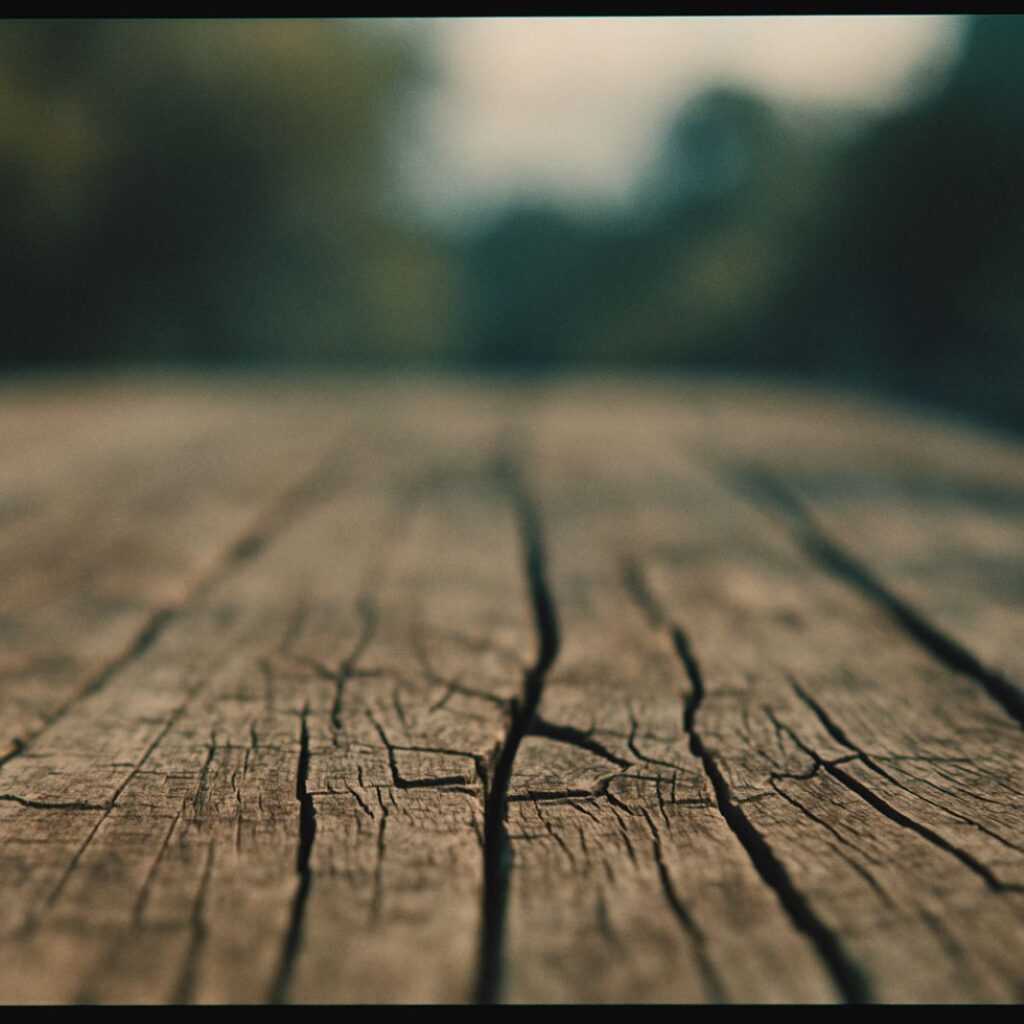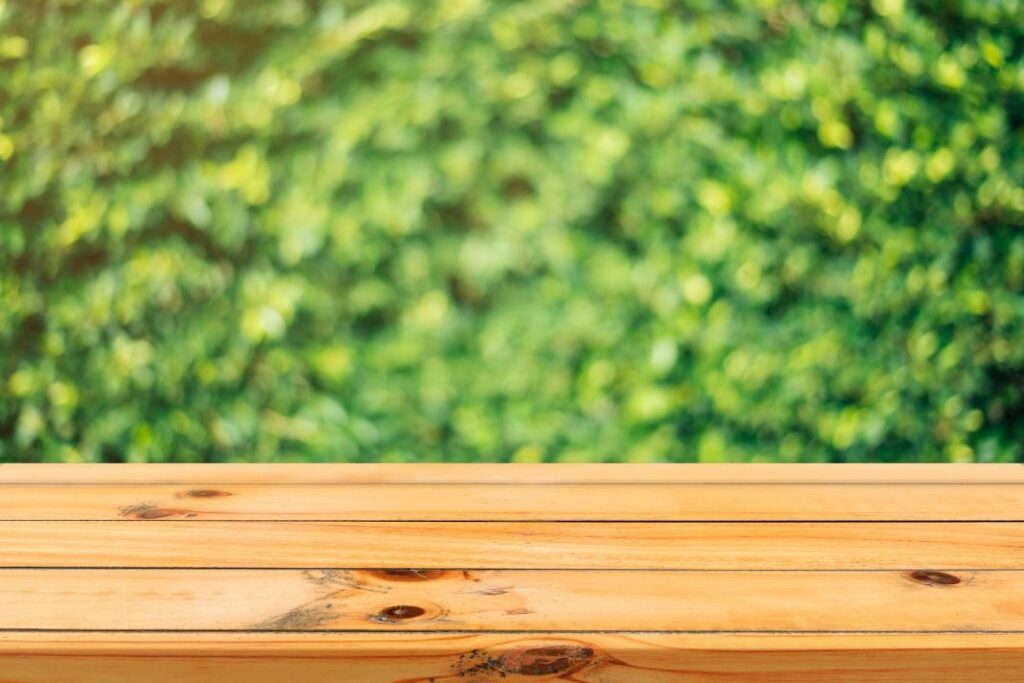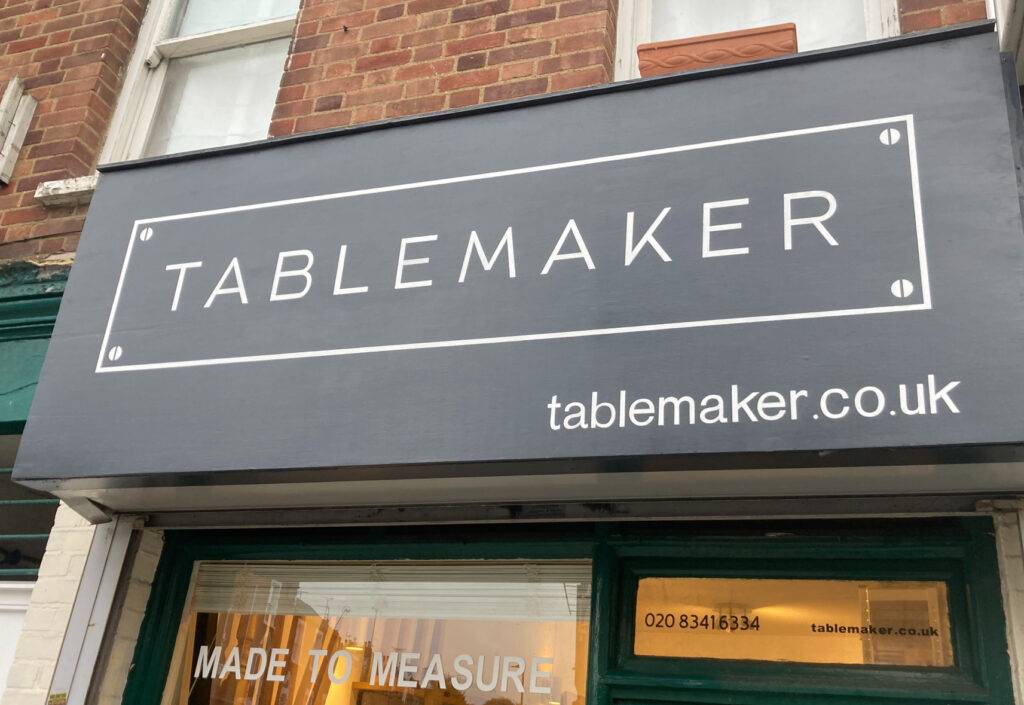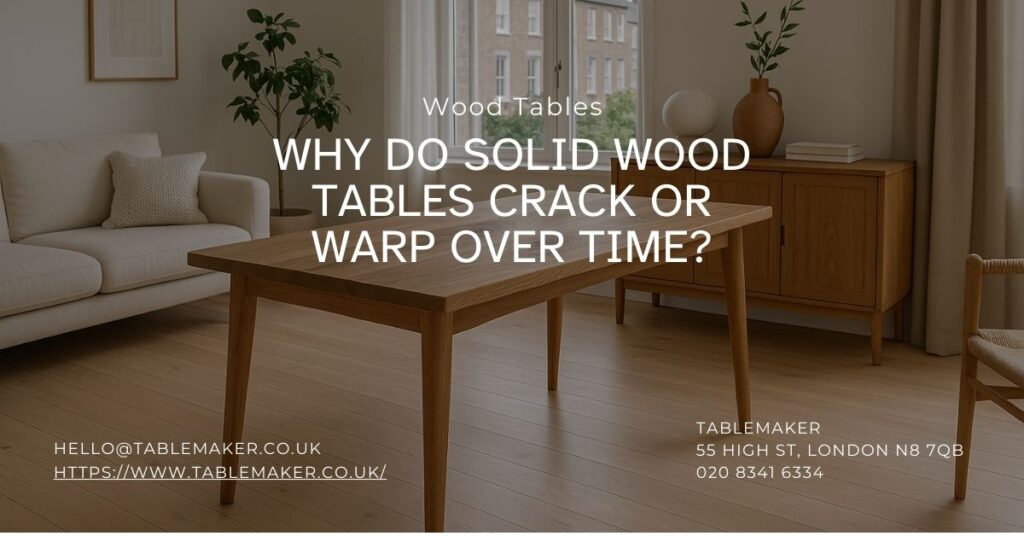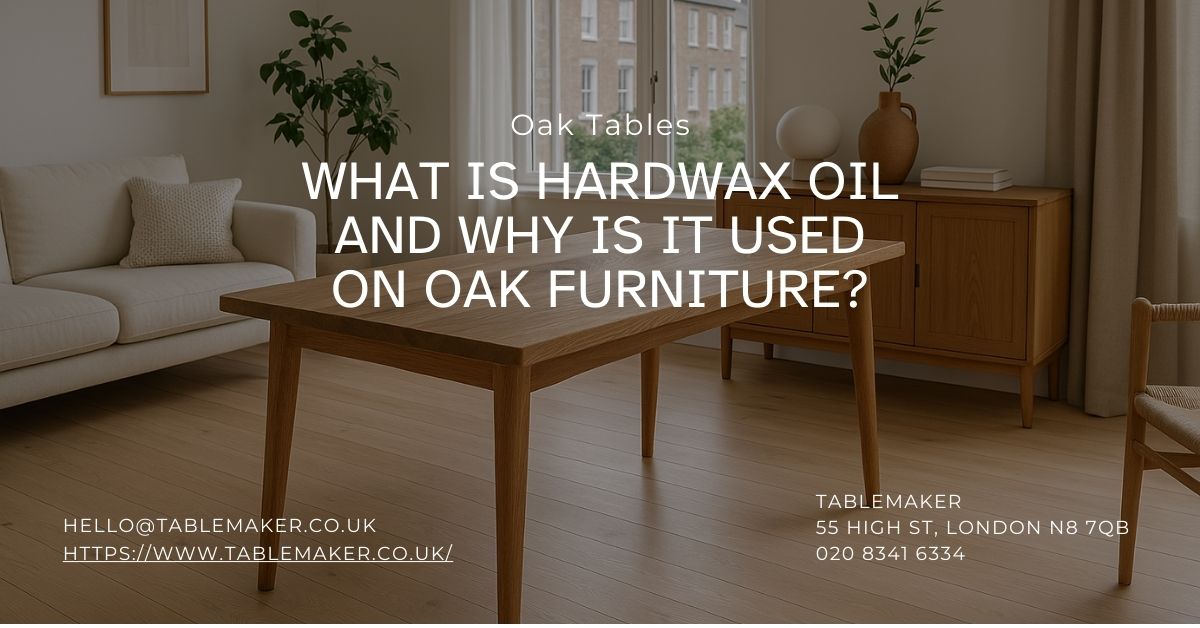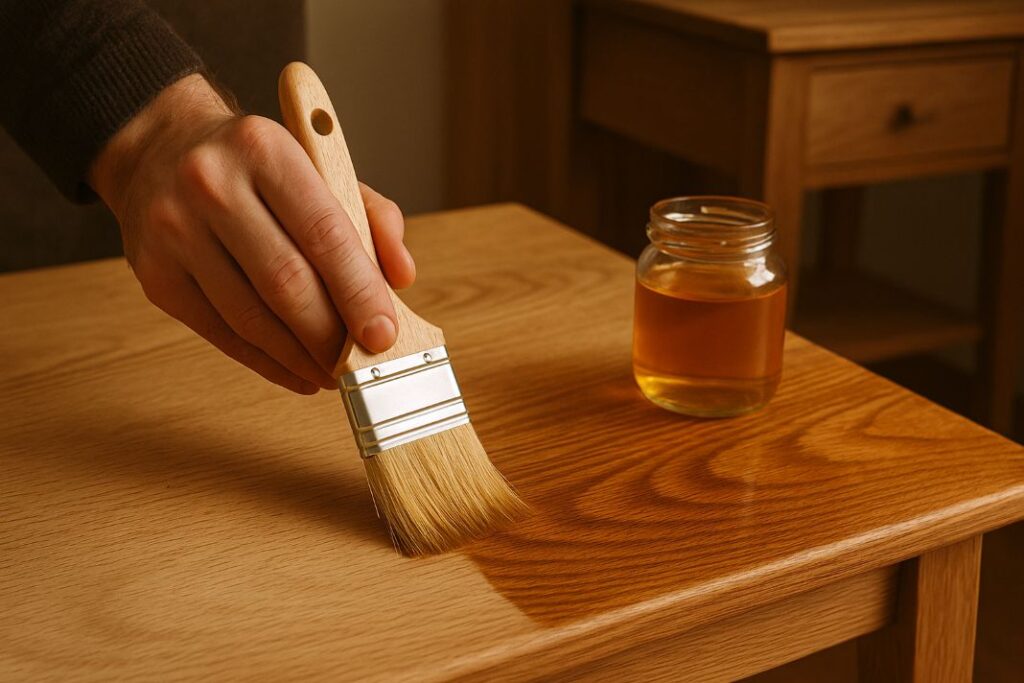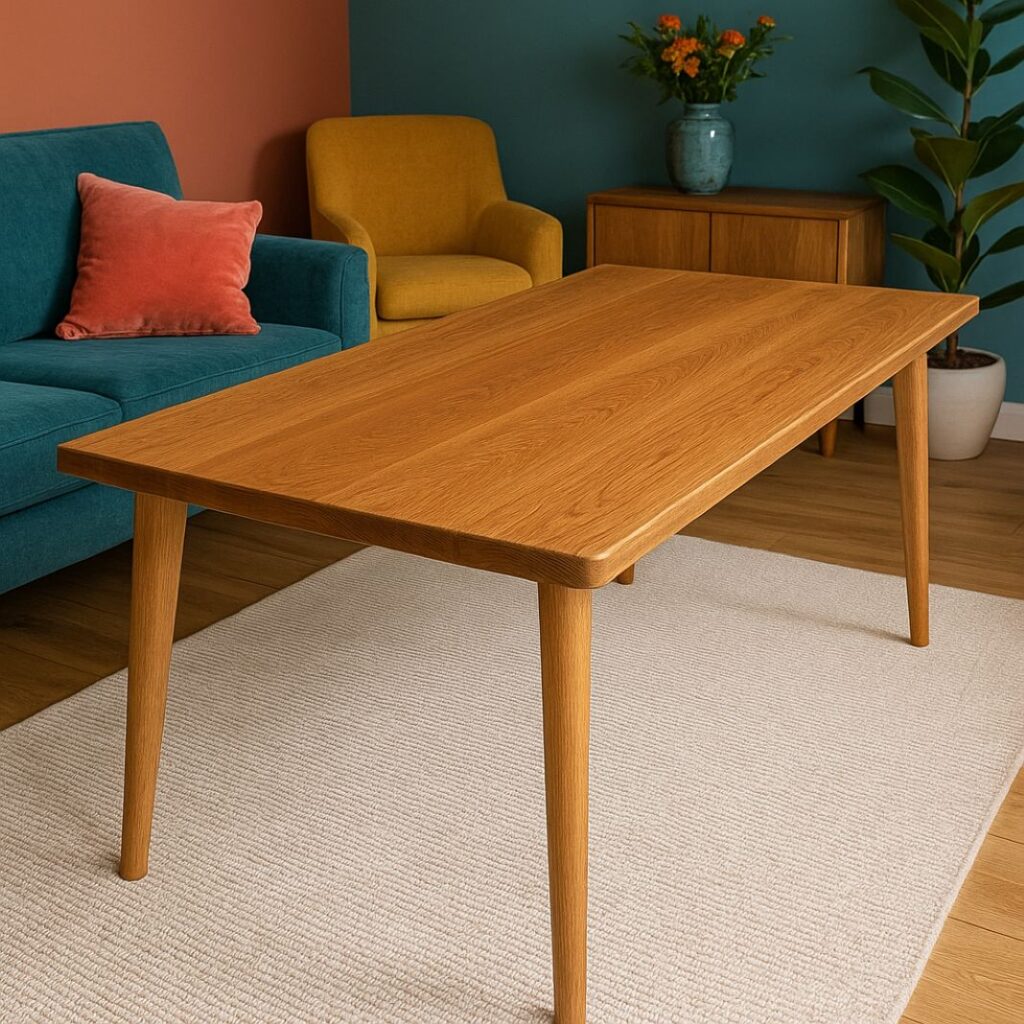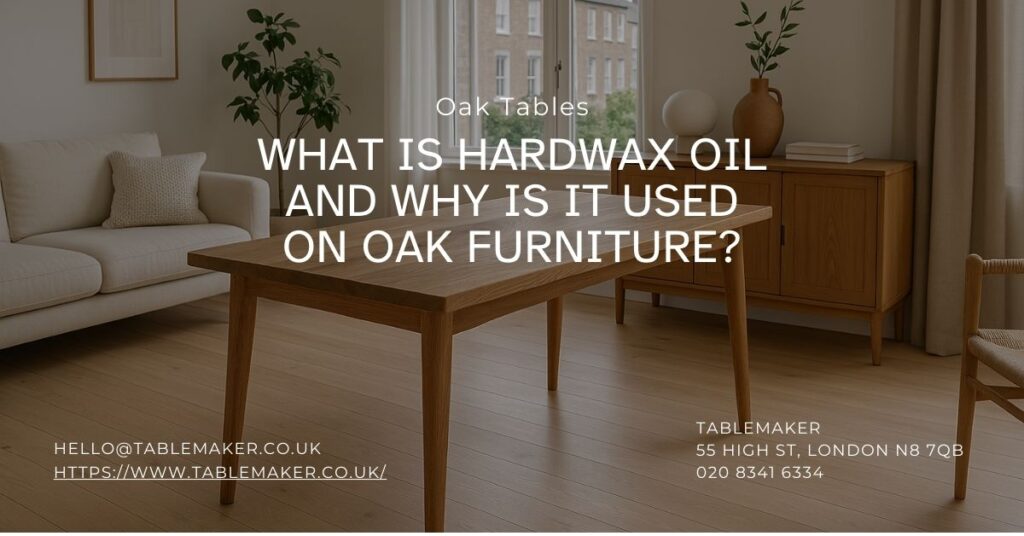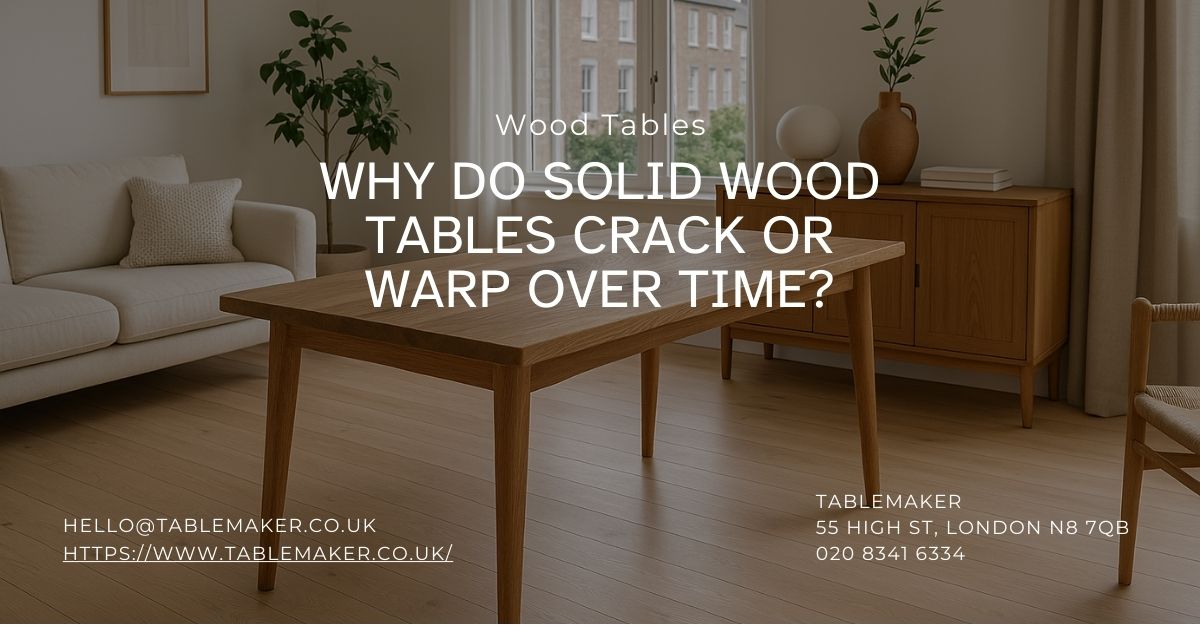
Why can solid wood tables crack or warp over time?
Solid wood tables can crack or warp over time because wood naturally responds to its environment. Changes in humidity, temperature, sunlight exposure, and how the table is made all influence how the wood moves. Even after being cut and shaped, wood is still alive in a sense. It breathes with the seasons, expanding when it absorbs moisture and shrinking when it dries out. Without the right conditions and care, this movement leads to visible cracks, warps, and twists.
In this article about dining tables for small areas we have covered
- Why do solid wood tables crack or warp over time?
- Understanding wood movement
- What causes cracking and warping in solid wood tables?
- The role of construction and design in wood stability
- Which wood species resist warping and cracking best?
- Why does improper drying cause future damage?
- Early signs your table might crack or warp
- Best ways to maintain and protect your solid wood table
- How to repair minor cracks and warping
The Living Beauty of Solid Wood Tables
Solid wood tables bring warmth and character to any home. Each piece tells a story through its unique grain patterns and natural textures. Unlike synthetic materials, real wood furniture changes subtly with its environment, which makes it so special. However, this living quality also means it can react to the world around it in ways that sometimes cause problems.
Understanding Wood Movement
The Anatomy of Wood: A Living, Breathing Material
Wood retains its cellular structure even after harvesting. These cellular structures, including vessels and fibres, respond to moisture in the air. If the air becomes dry, wood loses moisture and contracts. If it is damp, wood absorbs moisture and swells. This process is known as hygroscopic movement.
How Moisture and Temperature Changes Impact Wood
Each shift in humidity or temperature impacts the wood’s internal structure. Seasonal changes, heating systems, or air conditioning alter the moisture content in the surrounding environment. Over time, this ongoing expansion and contraction causes stress that may eventually lead to cracking, splitting, or cupping.
Pro Tip: Always use a hygrometer to monitor indoor humidity where your solid wood furniture sits. Keeping it between 40 percent and 60 percent dramatically reduces the risk of cracking or warping.
What causes cracking and warping in solid wood tables?
Fluctuating Humidity and Moisture Content
The most common reason for cracking and warping is the fluctuation of moisture content within the wood. During dry winter months, indoor air tends to be much drier, causing wood to lose moisture and shrink. In humid summer months, wood can absorb excessive moisture and expand. This continuous expansion and contraction cycle increases the risk of visible damage.
For additional guidance on managing your home’s humidity, you might find this guide on solid wood furniture humidity care helpful.
Temperature Swings and Indoor Climate Effects
Quick and frequent temperature changes, such as from central heating or proximity to open fires, stress the wood structure. This stress can lead to small fractures initially, which may grow into larger cracks if the climate remains unstable.
Exposure to Sunlight and UV Degradation
Direct sunlight damages the lignin in wood, which acts as the natural glue holding the fibres together. Over time, ultraviolet radiation dries out the wood and makes it brittle. This degradation weakens the surface and encourages both fading and cracking.
Protect Your Solid Wood Investment
Learn how Tablemaker tables are built to withstand the test of time with expert craftsmanship and dedicated care.
Explore Our Wood TablesThe Role of Construction and Design in Wood Stability
Joinery Techniques that Minimise Stress
Effective joinery distributes stress across the furniture, allowing natural wood movement without creating weak points. Mortise and tenon joints and dovetail joints are two examples that increase durability and allow for minor adjustments within the structure without causing visible damage.
How do floating tops and breadboard ends help prevent cracks?
Floating tops and breadboard ends are clever designs that permit movement across the wood grain. Floating tops are fixed in a way that leaves space for expansion and contraction. Breadboard ends are attached perpendicular to the grain of the main panel, allowing for slight shifts during seasonal changes. These methods significantly reduce the likelihood of cracks developing over time.
Wood Grain Orientation and Stability
Strategically aligning the grain direction during construction can greatly enhance the durability of a table. Using rift sawn or quarter sawn boards offers improved dimensional stability. Boards should be glued edge to edge with the grain running in complementary directions to balance natural wood movement.
Pro Tip: Rotate your solid wood tables every few months if they sit near windows or heating vents. This evens out exposure to light and temperature changes, helping maintain a consistent moisture balance throughout the piece.
Which wood species resist warping and cracking best?
Hardwood vs. Softwood: A Stability Comparison
Dense hardwoods like oak, maple, walnut, and cherry resist warping far better than softwoods like pine or fir. Their tight cellular structure reduces moisture absorption rates, maintaining a more consistent size and shape throughout seasonal shifts.
Best Woods for Extreme Climates
Certain species adapt better to areas with severe humidity changes. Teak, white oak, and mahogany are excellent choices for their oil-rich compositions and tight grains. These characteristics naturally shield them from excessive swelling or shrinking, making them ideal for solid wood dining tables and desks.
For inspiration on timber selection, explore our range of Tablemaker solid wood dining tables.
Why does improper drying cause future damage?
Kiln-Drying vs. Air-Drying: Knowing the Difference
Kiln drying speeds up moisture removal by heating wood inside a controlled environment. However, if performed too quickly, kiln drying dries the exterior while leaving moisture trapped inside the core. This imbalance often leads to internal stress, surface checking, and future cracking.
Air drying naturally balances moisture levels throughout the wood. Although slower, it produces a more stable material when eventually combined with gentle kiln drying techniques.
Surface vs. Core Moisture: What you cannot see
Surface moisture meters often give false reassurance. While the surface may register ideal moisture levels, the core could still retain higher moisture content. This hidden moisture slowly escapes once the table is placed in a heated indoor setting, leading to unexpected movement, splitting, or lifting seams.
Early signs your table might crack or warp
Warning Signs You Should Never Ignore
Subtle symptoms such as small gaps between boards, raised edges, or surface rippling suggest that wood movement is underway. Hairline cracks appearing across or along the grain are also early indicators of underlying tension.
Preventing Further Damage
If these early warning signs are detected, immediate action should be taken. Stabilising the indoor humidity, applying conditioning oils, and repositioning the furniture away from heat sources can slow or even reverse some damage.
Learn more about preventative care in our solid wood maintenance guide.
Need Help Repairing or Restoring Your Table?
Our skilled restorers specialise in bringing cracked or warped solid wood tables back to life.
Get a Repair QuoteBest ways to maintain and protect your solid wood table
Managing Indoor Humidity Effectively
Keep your indoor relative humidity between 40 percent and 60 percent to protect solid wood furniture. In drier months, use humidifiers to add moisture to the air. During damp periods, a dehumidifier can help maintain balance.
Cleaning and Conditioning
Dust your table regularly with a soft dry cloth. Every few months, apply a quality wood conditioner or natural wax polish. This creates a protective barrier that helps lock in moisture and protects the surface against everyday wear.
Seasonal Care Checklist
-
Inspect your table at the beginning of each season
-
Reapply wax or oil every three to six months
-
Maintain steady humidity levels throughout the year
-
Avoid placing heavy or wet items directly onto the surface
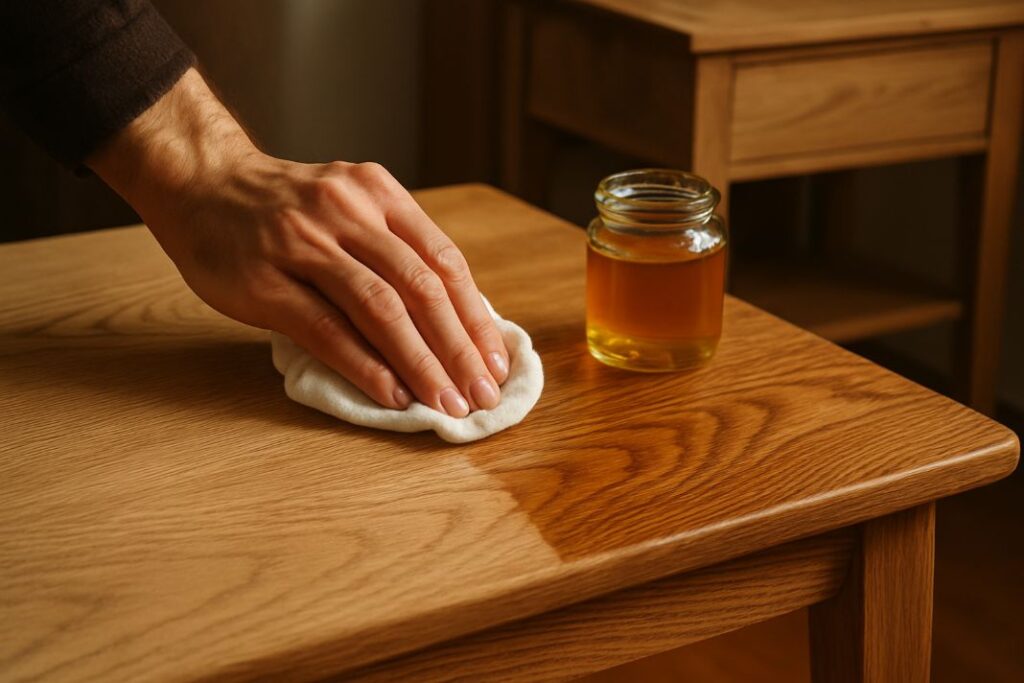
How to repair minor cracks and warping
Repairing Minor Damage
Small cracks can often be filled with wood filler that matches the colour of the table. Sanding lightly and reapplying a matching finish helps restore the appearance. Minor warping may be corrected using weight and controlled humidification to gently bring the wood back into shape.
When to Seek Professional Restoration
If the damage extends through multiple boards or affects structural integrity, it is better to consult a professional furniture restorer. Attempting complex repairs without proper tools and experience may worsen the condition.
Tablemaker’s Commitment to Quality and Longevity
Premium Timber Selection
At Tablemaker, we carefully select only the finest hardwoods that are properly seasoned through slow air drying and carefully controlled kiln processes. This reduces internal stresses and enhances stability.
Expert Joinery and Finishing
Our traditional joinery techniques, including mortise and tenon and dovetail joints, work together with floating panel construction and precision seasoning to ensure our tables adapt gracefully to their environments.
Comprehensive Warranty and Aftercare
We proudly offer a full wood movement warranty. Should any natural movement occur, we provide full workshop refurbishment services, ensuring that your investment is protected for the future.
Learn more about our Tablemaker quality commitment.
How to store solid wood tables correctly
Preparing for Long Term Storage
Before storage, clean and condition the wood to create a protective barrier. Cover the table with breathable fabric rather than plastic to avoid trapping condensation.
Maintaining Proper Storage Conditions
Store tables in climate controlled spaces where humidity remains between 40 percent and 60 percent. Avoid damp basements or unheated garages which can promote mould growth or uncontrolled drying.
Keeping Your Solid Wood Table Beautiful for Generations
Solid wood furniture offers timeless beauty and longevity when given the right care. With smart placement, regular maintenance, and a little attention to seasonal changes, a well made table can remain strong and beautiful for decades or even longer.
Tablemaker
55 High St, London N8 7QB
02083416334
HVQM+58 London

